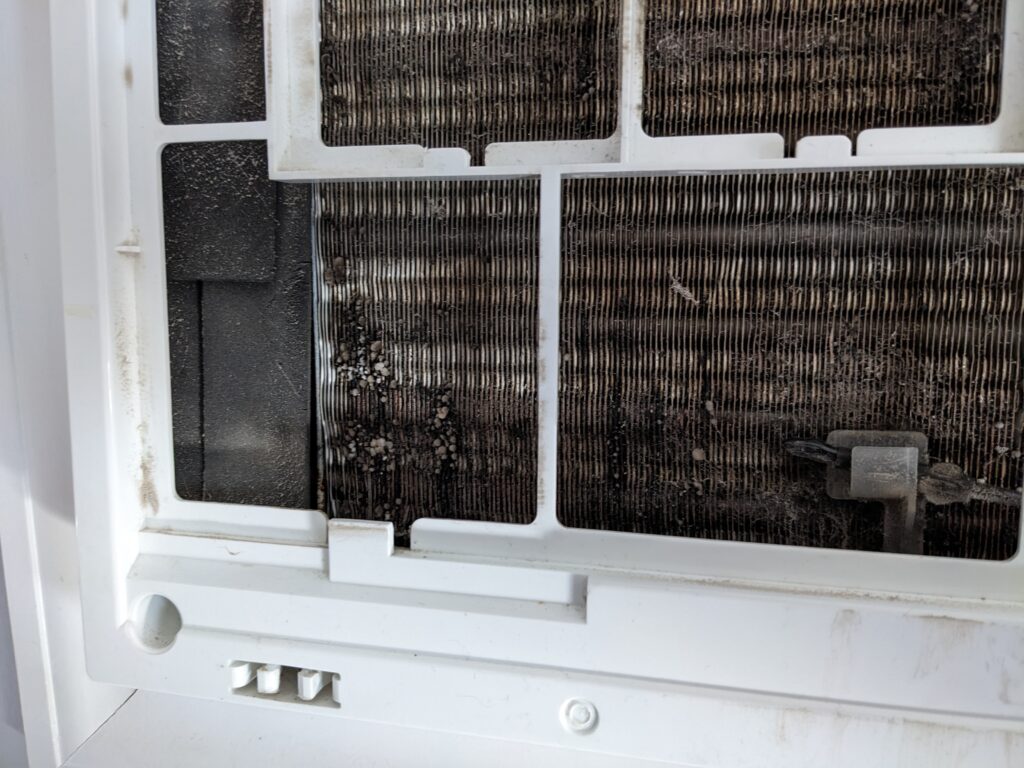Hello there! In this article, I want to shed light on an often-overlooked culprit for mold growth in our homes: the air conditioner. Your trusty AC can sometimes be a cozy hiding spot for mold. So, grab a seat, and let’s dive into why and how this happens, and more importantly, what you can do about it.
Understanding Mold: The Sneaky Intruder
Before we uncover the mold lurking in your AC, let’s get to know more about mold itself. Mold is a type of fungus that can thrive in the most unexpected places. It’s not just a cosmetic issue; it’s a health concern. Mold can trigger allergies, worsen respiratory conditions, and generally make life uncomfortable.
A Mold Haven in Your AC
Here’s the plot twist: your beloved air conditioner can sometimes be a breeding ground for mold. You might be wondering, “How on earth does that happen?” Well, it’s a combination of factors: moisture, temperature, and a bit of dust. Your AC’s cold coils create the perfect environment for moisture to accumulate, and when dust joins the party, mold spores have all they need to thrive.
I once inspected a home where the residents complained of persistent musty odors. To their surprise, the culprit turned out to be their air conditioner. It had become a mold paradise, and the musty smell was the giveaway. Below are two pictures where you can see visible mold growth on the aluminum fins and air vent of the unit.


Signs of Mold in Your Air Conditioner
Mold in your AC might not always be as obvious as seeing fuzzy patches on your walls. Here are telltale signs to watch out for:
- Musty Odors: If your AC is emitting a musty smell when you turn it on, that’s a red flag.
- Reduced Cooling Efficiency: If your AC isn’t cooling as effectively as it used to, mold might be obstructing the airflow.
- Allergy Flare-Ups: Frequently sneezing or allergy symptoms when the AC is running could be a sign of mold spores circulating in your home.
The Impact on Your Health
Mold in your AC isn’t just an inconvenience; it can impact your health. The connection between mold exposure and respiratory problems, allergies, and skin irritations is well-documented. If you or your family members are experiencing health issues, your AC might be the culprit.
Preventing Mold Growth in Your Air Conditioner
Now that we know more about mold, let’s talk about how to prevent mold from taking hold in your air conditioner.
- Regular Cleaning: Regularly clean and disinfect your AC unit, paying attention to coils, filters, and drain pans.
- Change Filters: Replace or clean air filters as recommended by the manufacturer.
- Address Leaks: Fix any leaks or condensation issues promptly to prevent excess moisture.
- Keep Humidity in Check: Use a dehumidifier if needed to maintain indoor humidity levels below 60%.
Dealing with Mold in Your Air Conditioner
If you suspect mold in your AC, here’s what you can do:
- DIY Cleaning: Some minor mold issues can be addressed with DIY cleaning using vinegar or hydrogen peroxide.
- Professional Help: For severe cases or if you’re uncertain, consult a professional mold assessor or remediation specialist.
Regular Maintenance and Inspections
Don’t let your guard down once you’ve tackled mold in your AC. Regular maintenance and inspections are your best allies:
- Annual Professional Inspections: Consider scheduling a yearly inspection by a certified professional such as a HVAC technician.
- DIY Maintenance: Follow the manufacturer’s guidelines for routine maintenance, including cleaning and filter replacement.
Conclusion
In the quest for a comfortable and healthy home, we often forget that mold can hide in the most unexpected places, like your air conditioner. But armed with knowledge and a bit of maintenance, you can keep your AC mold-free. Remember, it’s not just about cooling your home; it’s about ensuring the air you breathe is clean and healthy. So, take care of your AC’s, and it will take care of you. Stay cool and mold-free!
